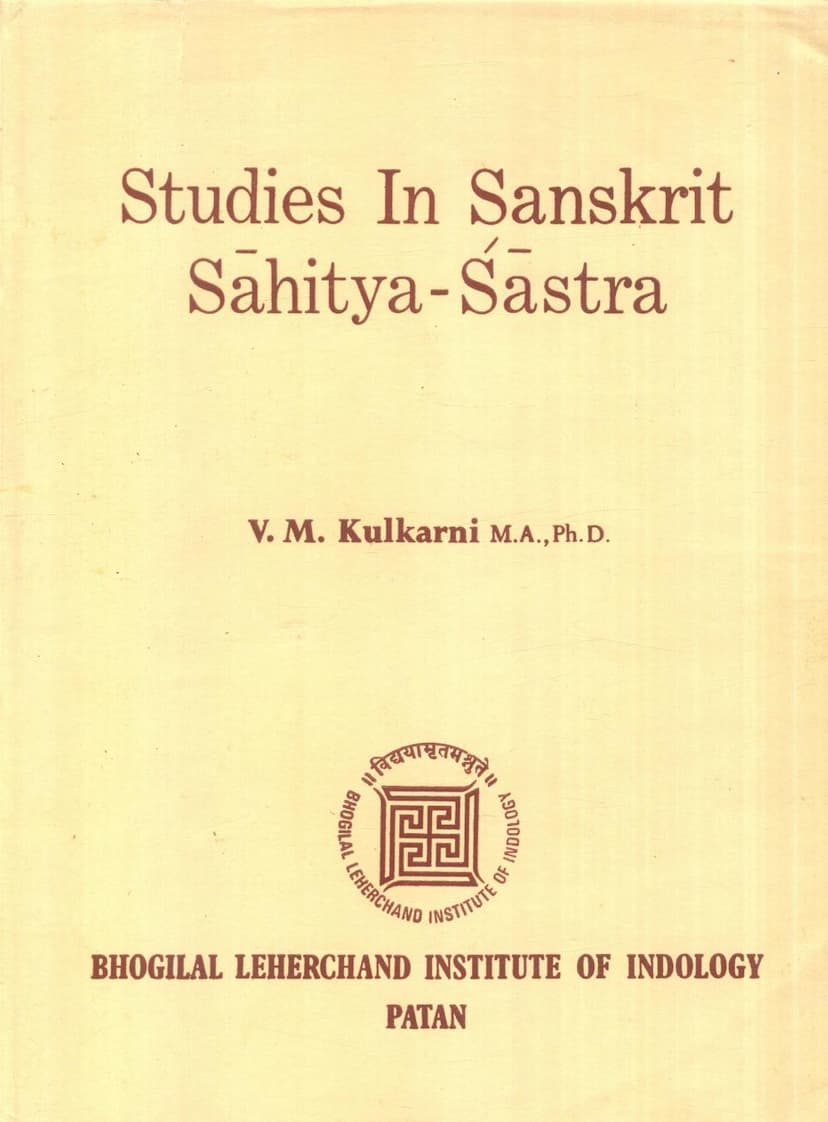Studies In Sanskrit Sahitya Shastra
Added to library: September 2, 2025

Summary
"Studies in Sanskrit Sahitya Shastra" by V. M. Kulkarni is a collection of scholarly papers exploring various, often overlooked, aspects of Sanskrit poetics and literary criticism. The book aims to shed new light on obscure points and bring to light previously unexamined facets of this field.
Key Themes and Areas of Study:
The collection delves into a range of topics, including:
- Plagiarism in Sanskrit Literature: The book examines how Sanskrit writers and rhetoricians conceptualized and dealt with plagiarism, originality, and literary theft, comparing their views with Western writers.
- Poetic Conventions (Kavisamaya): It analyzes the established traditions and conventions in Sanskrit poetry that deviate from everyday reality or scientific fact but are accepted for poetic effect, tracing their origins and evolution as discussed by rhetoricians like Rajasekhara.
- Intonation (Kāku) in Sanskrit Poetics: The work details the treatment of intonation, its significance in spoken drama and poetry, and the differing views of scholars like Bharata, Abhinavagupta, and Rajasekhara on its classification and effect.
- Textual Restoration of Abhinavabharati: Several papers focus on reconstructing and emending corrupt passages in Abhinavagupta's commentary on the Natya Shastra, often by cross-referencing with other works like Hemacandra's Kavyanusasana and Ramacandra and Gunacandra's Natyadarpana. This highlights the author's dedication to textual scholarship.
- Sanskrit Drama and its Structure: The book discusses key elements of Sanskrit drama, such as the concept of Sandhis (junctures), their relationship with artha-prakṛtis (elements of the plot), and the detailed analysis of sandhyangas (subdivisions of junctures), drawing heavily on the Natya Shastra and later commentaries.
- Specific Literary Works and Authors: The author provides critical analyses of specific poems and poets, including:
- Bhamaha's Kavyalamkara: Examining Bhamaha's views on grammar and poetry, his discussion of logical concepts within poetics, and offering fresh interpretations of his often-debated verses with the help of the Kalpalataviveka.
- Rati-Vilapa and Devi-sambhoga-varnana: Analyzing Kalidasa's portrayal of emotions in the Kumara Sambhava, particularly Rati's lament and the description of Siva and Parvati's union, engaging with the criticisms of poets like Anandavardhana, Mammața, and Kṣemendra regarding potential over-elaboration or impropriety.
- Harivijaya of Sarvasena: Investigating the lost Prakrit epic Harivijaya, reconstructing verses, and discussing its influence and poetic significance based on citations in later Sanskrit works.
- Hemacandra's Kavyanusasana: Examining the sources and the originality of Hemacandra's influential work on poetics, noting his reliance on predecessors while also highlighting instances of independent thought.
- Prakrit Verses in Alamkara Works: Discussing the prevalence and significance of Prakrit verses in Sanskrit poetics, addressing issues of corruption in textual transmission, and defending the aesthetic merit of these verses against charges of obscenity.
- The Jaina View of Aesthetic Experience: Exploring the perspectives of Jaina authors on rasa (aesthetic sentiment), comparing them with mainstream Sanskrit theories and noting the unique aspects of Jaina interpretations, such as the categorization of rasas as pleasurable or painful.
- Patakasthānaka: A detailed examination of this dramatic device, analyzing its definition, types, purpose, and application in Sanskrit drama, and resolving ambiguities in its interpretation.
Author's Approach:
V. M. Kulkarni, as the Director of the Bhogilal Leherchand Institute of Indology, brings a wealth of experience as a former professor of Sanskrit and Prakrit literature and poetics. His approach is characterized by:
- Comparative and Critical Study: Elucidating obscure and doubtful points through comparative analysis.
- Original Research: Bringing to light new facts and interpretations.
- Textual Scrutiny: A deep engagement with manuscripts and critical editions to restore and clarify difficult texts, particularly Abhinavabharati.
- Interdisciplinary Connection: Bridging the fields of Sanskrit literature, poetics, aesthetics, grammar, logic, and even Prakrit studies.
The collection represents a significant contribution to the study of Sanskrit poetics, offering fresh perspectives and detailed analyses of topics that have often been neglected by scholars.